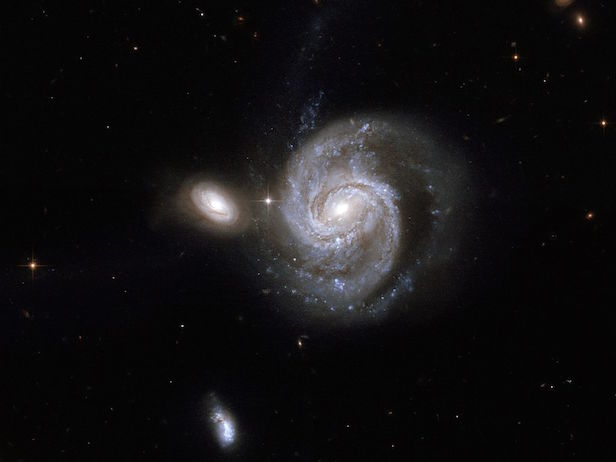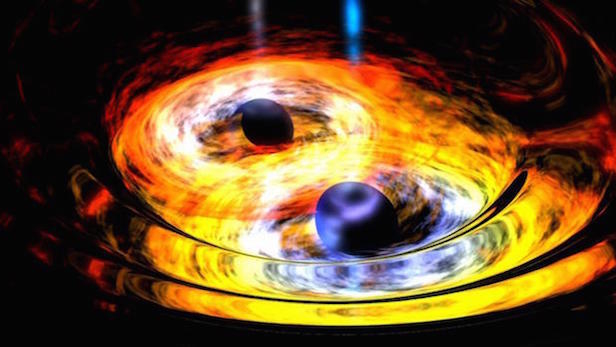Astronomers discover closest-ever supermassive black hole pairing
The system resides in spiral galaxy NGC 7674, which is located about 400 million light years from Earth
Dr Preeti Kharb and Dr Dharam Vir Lal from the National Centre for Radio Astrophysics (NCRA), TIFR, Pune, and David Merritt from the Rochester Institute of Technology, New York, USA, have discovered the closest ever binary supermassive black hole system in a spiral galaxy named NGC 7674, located about 400 million light years from Earth. The apparent separation of the two black holes in the binary system is less than one light-year. This is much less than the previous record holder, which was a black hole binary with a separation of about 24 light years.
This discovery is very significant since this is a direct observational proof of the existence of close supermassive black hole binary systems inside galaxies, which are potential sources of gravitational waves.
Black holes are amongst the most fascinating objects, and even more the binary black holes (two black holes orbiting around each other). The existence of binary black holes, roughly 10 times the mass of Sun, got confirmed by the recent detection of gravitational waves by the LIGO telescope in 2015.
Astrophysicists have long predicted the existence of a second class of binaries, consisting of supermassive black holes, each having a mass upwards of one million times the mass of the Sun. Single supermassive black holes are known to be present at the centres of most galaxies, and since galaxies are observed to merge with other galaxies, it is possible to form gravitationally bound black hole pairs. In due course of time, these two supermassive black holes would coalesce via the emission of gravitational waves.
The binary system was detected using a technique called very long baseline interferometry (VLBI), in which separate radio telescopes around the world can work together as a single large telescope, achieving an angular resolution of milli- or microarcseconds – roughly 10 million times that of the human eye. Using VLBI techniques, two compact sources of radio emission were detected at the centre of NGC 7674.
“The two radio sources have properties that are known to be associated with massive black holes that are accreting gas,” Preeti Kharb says, “implying the presence of two black holes.” The combined mass of the two black holes is roughly 40 million times the mass of the Sun. Kharb and her team estimate the orbital period of the binary to be about 100,000 years.
“Detection of a binary supermassive black hole in this galaxy also confirms a theoretical prediction that such binaries should be present in so-called Z-shaped radio sources,” David Merritt states. NGC 7674 is such a radio source. The name “Z-shaped” refers to the twisted morphology of the galaxy’s radio emission on much larger scales. This morphology is thought to result from the combined effects of the galaxy merger followed by the formation of the massive binary.
Keep up to date with the latest reviews in All About Space – available every month for just £4.99. Alternatively you can subscribe here for a fraction of the price!






